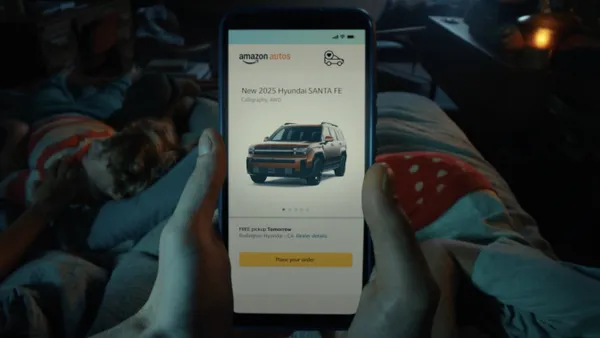Dive Brief:
- Walmart's subsidiary Code Eight is reportedly in the early stages of piloting a shopping service aimed at allowing wealthy New York City moms to research and buy products via text, including using product photos, multiple unnamed sources told Recode. A request for comment and more details from Retail Dive was not immediately returned by Walmart.
- The target customers for Code Eight are wealthy city dwellers, and the service aims to offer free delivery of household products within 24 hours. Other purchases are delivered within two business days, and returns can be picked up for free from customers’ homes, Recode reported. The effort is one of the first services to emerge from Walmart's startup incubator Store No. 8, which earlier this year tapped Rent the Runway co-founder Jennifer Fleiss in New York City to lead Code Eight with a focus on personalization using artificial intelligence.
- Project Kepler, also out of Store No. 8, is developing a technology-heavy Amazon Go-like store that uses computer vision and cashier-free checkout, Recode also reports. Mike Hanrahan, Jet co-founder and former chief technology officer, is leading the project out of Hoboken, N.J., where Jet is based, according to Recode.
Dive Insight:
A year from Walmart’s $3.3 billion purchase of Jet, the acquisition appears to be the fulcrum of the retail giant’s attempt to reach wealthier customers, a segment that has eluded it for years. The Jet deal, as well as more recent acquisitions — of Bonobos, Modcloth and Moosejaw among others — seem bent on attracting higher-income shoppers and pushing beyond Walmart's addressable market.
Jet isn’t just a way for Walmart to expand its online chops, which had been dismal for years. The young company is also providing the retail giant with a profusion of technology and retail expertise.
New brands have helped Walmart improve the experience for existing customers and extend its reach to new customers, Ravi Jariwala, senior director of public relations at Walmart.com, told Retail Dive earlier this year. The moves in some ways appear to be a effort to push into Amazon's domain by Walmart e-commerce chief Marc Lore, who worked at Amazon after its own acquisition of his previous e-commerce effort, Quidsi. Amazon's customer base, particularly Prime members, is wealthier and younger than Walmart's.
Walmart’s "aggressive omnichannel strategy" (including incentives for in-store pickup of online orders and the reported Code Eight experiment in New York) is fortifying its defensive position against Amazon's prowess, to the point where Citi analysts this week deemed the brick-and-mortar giant a "true challenger to Amazon."
But not all observers agree. While Citi analysts are optimistic that Walmart's e-commerce growth is gaining on Amazon, some onlookers say it's not an even comparison. Plus, it's not clear how much Walmart can stray from its customer base without forfeiting it. "To move Walmart upmarket is a Herculean task," retail futurist Doug Stephens, author of "Reengineering Retail: The Future of Selling in a Post-Digital World," told Retail Dive in the wake of the Jet deal last year. "Any time they do, they risk losing their most loyal customers."
These cutting-edge projects aren't likely to open up to consumers in the immediate future. Store No. 8 principal Katie Finnegan told Retail Dive in October that the company thinks about technologies in three, five, seven and even 10 year increments.
"All shopping isn't considered a chore, and I think sometimes from my perspective it's a one size fits all response to what's going to happen," Finnegan said. "What excites me is the ability to really enhance things that need to be enhanced, so customers can spend time where they want, and then to streamline and remove friction in things that have way too much friction in them."















